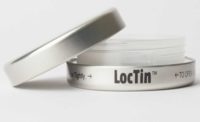Move over asbestos, you may have met your match. For years, personal injury lawyers have been searching for “the next asbestos,” and although they achieved significant successes against big tobacco, a new toxin with the staying power of asbestos has remained elusive. Recent court rulings and years of civil lawsuit defeats have dulled the once shining star of so-called toxic mold. Personal injury lawyers may now be on the verge of striking gold—that is, the golden hue of diacetyl, a yellowish food flavoring agent that, when combined with other ingredients, produces a butter-like flavor. Approved for use by the U.S. Food and Drug Administration (FDA), diacetyl is used in a variety of food products such as pastries, pancake syrup, candy, and most notably, microwave popcorn. In its natural state, diacetyl is found in consumer products, such as butter, beer, coffee and chardonnay.
Over the past several years, however, increased attention has been given to diacetyl and its potential role in causing a rare lung disease, bronchiolitis obliterans, in hundreds of workers in microwave popcorn factories. Also called popcorn workers’ lung, bronchiolitis obliterans is a progressive disease of the lung’s smallest airways. The disease is ordinarily associated with lung transplantation but may be triggered by adverse drug reactions, certain bacterial or viral infections, or inhalation of airborne toxicants. Numerous lawsuits have been filed, cases argued and millions of dollars in damages awarded as a result of occupational exposure and resulting injuries to these workers.
With the specter of a continued lawsuits against flavor and food processors that make or use this chemical agent, companies all along the supply chain will need to stay abreast of current regulations and potential legal ramifications in order to make informed choices about effective next steps. In order to understand the current level of concern by industry, regulators and consumers, let’s consider first the origins of diacetyl investigation in the U.S.
Studies Provide Evidence of Hazard
Concerns over occupational diacetyl exposure were first documented in a study conducted by BASF in 1993. The BASF study involved the forced inhalation exposure of diacetyl to three groups of 10 rats over a four-hour period. The first group of rats was forced to inhale low concentrations of diacetyl (2.25 mg/L) while the second and third groups were forced to inhale moderate (5.2 mg/L) and high levels (23.9 mg/L) of diacetyl, respectively. None of the rats exposed to low levels of diacetyl died during the study, while all of the rats exposed to moderate and high levels died within seven days of exposure. Notably, rats exposed to moderate and high levels resulted in an abundance of symptoms indicative of respiratory tract injury.
In August 2000, the Missouri Department of Health and Senior Services requested assistance from the National Institute of Occupational Safety and Health (NIOSH) to investigate severe obstructive lung disease in former workers of the Gilster-Mary Lee popcorn plant in Jasper, Missouri. Five other plants were also studied by NIOSH.
A NIOSH survey at the Gilster-Mary Lee plant in November 2000 showed that workers who prepared the butter mixture containing diacetyl had decreased lung capacities, and in some cases, symptoms of bronchiolitis obliterans in numbers exponentially higher than that of the general public. Indeed, plant employees had 3.3 times the rate of pulmonary obstruction on NIOSH spirometry tests as compared to national rates. Medical findings on the affected workers were consistent with constrictive bronchiolitis obliterans. Significantly, five of six quality control workers who repeatedly popped bags of popcorn in microwave ovens—100 bags per worker per shift—in a poorly ventilated environment were found to have obstruction on spirometry. None of the other five microwave popcorn plants evaluated by NIOSH had similar evidence of risk. Only three of the five plants, however, popped many dozens of bags of microwave popcorn per shift.
NIOSH also conducted animal studies. In one study, rats forced to inhale vapors from heated butter flavoring used at the Gilster-Mary Lee plant developed severe injury to their airway epithelial lining after a six-hour exposure. In another animal study, diacetyl alone produced similar effects.
NIOSH’s evaluation of the workforce at the Gilster-Mary Lee plant showed an association between exposure to vapors from flavorings used in the popcorn production process and decreased lung function. Similar fixed obstructive lung disease has also occurred in workers at other plants that use or manufacture flavorings. Thus, NIOSH concluded that inhalation exposure to butter flavoring chemicals is a risk for occupational lung disease.
While the medically-established link between diacetyl exposure (as opposed to exposure to butter flavoring chemicals generally) and bronchiolitis obliterans remains inconclusive, diacetyl remains at the epicenter of controversy among those concerned with workplace and consumer safety.
Carmi Plant Investigation
In August 2004, the California Department of Health Services (CDHS) and Division of Occupational Safety and Health (Cal/OSHA) received the first report of bronchiolitis obliterans in a worker at a food flavoring manufacturing plant in California. In April 2006, a report of another worker from a different flavoring manufacturing company diagnosed with bronchiolitis obliterans was received. Neither of these workers was employed in the microwave popcorn industry but both were involved in the manufacturing of artificial butter flavorings and handled pure diacetyl during the course of their employment.
As a result of these two cases, Cal/OSHA conducted investigations of the two companies in August 2004 and August 2006, respectively. One of the companies investigated was Carmi Flavor and Fragrance Co. (Carmi) in Commerce, CA. Since April 2006, five additional flavor manufacturing workers have been diagnosed with severe fixed obstructive lung disease. Thus, a total of seven workers from four flavoring manufacturers in California have been diagnosed with some degree of severe fixed obstructive lung disease. Six of the workers handled diacetyl and other chemicals, and the seventh was a production worker who packaged powdered flavorings.
On June 11, 2006, CDHS and Cal/OSHA requested NIOSH’s technical assistance with industrial hygiene assessment and medical screening for occupational lung disease at the Carmi plant. In August 2006, NIOSH staff conducted air sampling in all areas of the plant. NIOSH staff also conducted follow-up spirometry tests on production and laboratory workers. The average and peak air concentrations of diacetyl at the Carmi plant were found to be similar to concentrations measured at popcorn plants where workers exposed to butter flavoring chemicals developed similar severe fixed obstructive lung disease. Thus, it was no surprise that the rate of Carmi plant workers diagnosed with fixed obstructive lung disease far exceeded what would be expected in the general population.
NIOSH concluded the report of its investigation of the Carmi plant by noting that “it is highly likely that exposures to diacetyl contributed to the occurrence of severe fixed obstructive lung disease in production workers.” NIOSH further noted, however, that it is unknown if other chemicals may have also contributed to the development of disease.
Current Standards and Regulations
FDA has given diacetyl “Generally Regarded as Safe” (GRAS) status and there are currently no limits or standards governing the use of diacetyl in the workplace. California, however, may be the first state to take action against diacetyl use in the workplace. In response to pressure from labor unions and advocacy groups, the California legislature proposed a bill that, if enacted, would ban the manufacturing, packaging, mixing or blending of diacetyl or products that contain diacetyl in the workplace on or after Jan. 1, 2009. Under the proposed bill, naturally occurring diacetyl in food or beverages or processes that result in the natural production of diacetyl would be excluded from this prohibition.
Further, in April 2007, the U.S. Department of Labor’s Occupational Safety and Health Administration (OSHA) announced that it is initiating an OSHA National Emphasis Program to address hazards and control measures associated with working in the microwave popcorn industry where butter flavorings containing diacetyl are used. OSHA will provide direction on inspection targeting and procedures, methods of controlling the hazard and compliance assistance. The 24 states and two U.S. territories operating their own OSHA programs are encouraged, but not required, to adopt similar programs.
Additionally, several advocacy groups and politicians have petitioned FDA to remove diacetyl’s GRAS designation. Recently, U.S. Congresswoman Rosa L. DeLauro called on Andrew von Eschenbach, FDA Commissioner, to reexamine the GRAS designation for diacetyl. Dr. David Michaels, Director of Project on Scientific Knowledge and Public Policy of the George Washington University has also weighed in on the brewing controversy surrounding the FDA’s GRAS designation of diacetyl. “[T]here is compelling evidence of disease caused by breathing diacetyl vapors, and there is no evidence that there is a safe exposure level below which exposure does not cause lung disease,” said Michaels.
A Hotbed of Litigation
Although diacetyl has been used in artificial butter flavoring for more than 50 years, significant numbers of microwave popcorn manufacturing workers diagnosed with severe fixed obstructive lung disease were not seen until the early 1990s. It was about that time that diacetyl concentrations in artificial butter flavorings increased due to formula changes. Consequently, hundreds of lawsuits involving occupational diacetyl exposure have been filed against microwave popcorn and food flavoring manufacturers, and hundreds of millions of dollars have already been paid out in settlements and jury awards. Millions more have been spent on attorneys’ fees defending those suits.
In fact, two new lawsuits on behalf of 44 more plaintiffs have recently been filed in Jasper County, MO, against the makers of a butter flavoring used at a local microwave popcorn plant. The plaintiffs in those lawsuits involve 43 current and former workers at the plant and a man who lived near the facility.
Impact on Consumers
Despite the debate surrounding the safety of diacetyl in the workplace, no scientific study results have been released examining its effects on consumers. In the fall of 2003, the U.S. Environmental Protection Agency (EPA) began a study to examine the type and amount of chemicals emitted from popped microwave popcorn bags.
“Further research would be needed to determine the health effects of those chemicals and whether consumers are at risk,” said Jacky Rosati, an EPA scientist involved in the study. “Once we know what chemicals are and the amounts, somebody else can look at the health effects,” Rosati said. “Obviously, we are looking at diacetyl because it is a known compound that will come off this popcorn. But we’re not looking at that alone.”
While the risk to consumers is generally considered low, the results of EPA’s study, which was to have been completed years ago, have yet to be published.
Even without such a study, evidence is beginning to surface anecdotally that diacetyl may in fact have a significant—and adverse—health impact on consumers. In early September, the Associated Press (AP) newswire reported that a pulmonary specialist from the National Jewish Medical and Research Center in Denver, CO, had informed federal regulators that physicians may have identified the first non-industrial occupational case of bronchiolitis obliterans. The single case involves a consumer whose exposure to fumes from preparing butter-flavored microwave popcorn several times a day over a number of years is the only plausible explanation at this time for the patient’s illness, stated Dr. Cecile Rose, in a written statement to FDA, the Centers for Disease Control and Prevention (CDC), and other public health agencies. Although one case does not constitute incontrovertible evidence that microwaving popcorn at home increases consumers’ risk of developing lung disease, Rose indicated that levels of airborne diacetyl measured at the patient’s home near the microwave area were “similar to those reported in the microwave oven exhaust area” at one microwave popcorn processing plant where employees developed severe fixed obstructive lung disease believed to have been caused by diacetyl exposure. The doctor also said that the patient’s respiratory difficulties appeared to stabilize after he quit using microwave popcorn.
Following publication of Rose’s letter on a public health blog, the Flavor and Extract Manufacturers Association (FEMA) issued a statement recommending that its members reduce “to the extent possible” the amount of diacetyl in butter flavorings they make. “This new information suggests a possible association between inhaling the fumes from the preparation of several bags of heavily butter-flavored microwave popcorn each day when the butter flavor contains diacetyl and the development of the patient’s severe respiratory illness,” the FEMA statement said.
In addition, both CDC and FDA stated that they are actively reviewing the potentially broader health implications posed by the use of diacetyl in non-industrial settings as raised by the Denver report. Two of the nation’s largest microwave popcorn product makers, ConAgra Foods and Pop Weaver, also announced that they will begin to phase out and/or remove diacetyl from their products due to worker safety and potential consumer health concerns and plan to develop alternative formulations to attain the desired buttery flavor profile.
Future Implications
One of the primary impediments to diacetyl becoming the “next asbestos” is the relatively limited number of individuals exposed to it in the workplace. The flood of recent reports of tainted food products imported from China, however, has heightened the public’s fears about the safety of the foods they consume. Seasoned trial attorneys will surely attempt to prey upon these fears by attempting to establish a casual link between diacetyl exposure at the consumer level and respiratory disease. If successful, every person who suffers or has suffered from respiratory disease is a potential plaintiff. The costs associated with defending such claims would be staggering.
A groundswell of consumer-driven diacetyl litigation is not merely a pipedream of trial lawyers. Much of the scientific research conducted to date, including the NIOSH rat study, clearly provides the foundation for the theory that diacetyl vapors can cause respiratory injury to consumers of food products. Bolstered by a potentially larger pool of litigants from the consumer sector—especially if medical cases linked to the chemical flavoring agent such as that reported in Denver rise in number—and teamed with advocates such as Dr. Michaels and legislators like Rosa L. DeLauro, trial lawyers are likely to succeed in expanding diacetyl litigation far beyond that which we know today in the industrial occupational environment.
Despite the lack of a concrete, medically-established link between diacetyl inhalation exposure and respiratory disease, food manufacturers should give serious consideration to eliminating diacetyl from their products whenever possible. Recent legislative efforts on the federal and state levels to regulate diacetyl use in the workplace are clearly intensifying and may result in an outright ban of the product in California. Other states’ legislatures are sure to follow California’s lead.
In light of this trend, food manufacturers are well advised to eliminate diacetyl from their products before they are required to do so by legislative or regulatory efforts. Continuing to use diacetyl in food products—irrespective of whether it is capable of causing respiratory disease—may become too costly, both from a monetary and public relations standpoint, for microwave popcorn and food flavoring manufacturers, and even food distributors and retailers. The potential legal quagmire that diacetyl, the food industry’s “asbestos,” poses is one that can be largely mitigated by a commitment to finding alternative flavoring compounds to remove it entirely from production processes and finished products.
Richard Fama is a member of Cozen O’Connor and is actively involved in the firm’s food liability practice group. He represents major food processors, manufacturers and distributors (including Fortune 100 companies) in products liability matters, including diacetyl-related claims and lawsuits arising from tainted food products. He also provides counsel to manufacturers and distributors regarding country of origin labeling issues.
Beware Diacetyl: The Next Legal Quagmire?



